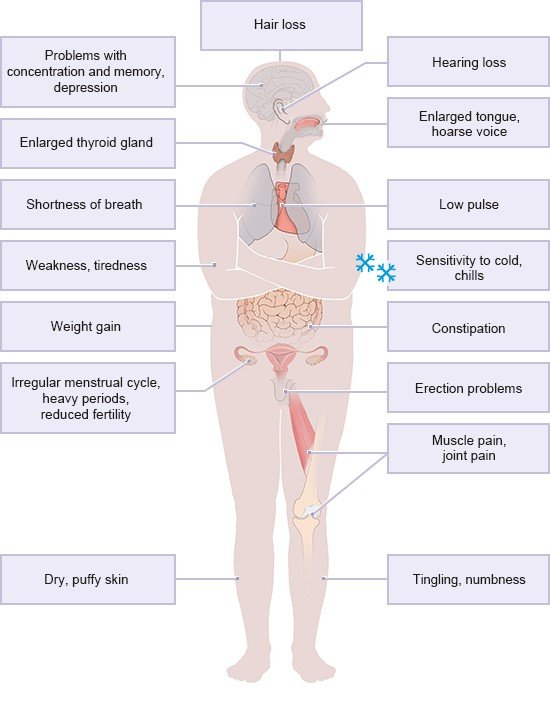Akamizu T, Amino N. Hashimoto's Thyroiditis. Endotext 2017.
Chaker L, Bianco AC, Jonklaas J et al. Hypothyroidism. Lancet 2017; 390(10101): 1550-1562.
Deutsche Gesellschaft für Allgemeinmedizin und Familienmedizin (DEGAM). Erhöhter TSH-Wert in der Hausarztpraxis (S2k-Leitlinie). AWMF-Registernr.: 053-046. 2023.
Jameson JL, Mandel SJ, Weetman AP. Disorders of the Thyreoid Gland. In: D. L. Kaspers, S. L. Hauser, J. L. Jameson et al. (Ed). Harrison's Principles of Internal Medicine. McGraw-Hill Education; 2015.
Jonklaas J, Bianco AC, Bauer AJ et al. Guidelines for the treatment of hypothyroidism: prepared by the american thyroid association task force on thyroid hormone replacement. Thyroid 2014; 24(12): 1670-1751.
Katagiri R, Yuan X, Kobayashi S et al. Effect of excess iodine intake on thyroid diseases in different populations: A systematic review and meta-analyses including observational studies. PLoS One 2017; 12(3): e0173722.
National Institute for Health and Care Excellence (NICE). Thyroid disease: assessment and management. 2019.
Pearce SH, Brabant G, Duntas LH et al. ETA Guideline: Management of Subclinical Hypothyroidism. Eur Thyroid J 2013; 2(4): 215-228.
Schübel J, Feldkamp J, Bergmann A et al. Latente Hypothyreose des Erwachsenen. Dtsch Arztebl Int 2017; 114(25): 430-438.
IQWiG health information is written with the aim of helping people understand the advantages and disadvantages of the main treatment options and health care services.
Because IQWiG is a German institute, some of the information provided here is specific to the German health care system. The suitability of any of the described options in an individual case can be determined by talking to a doctor. informedhealth.org can provide support for talks with doctors and other medical professionals, but cannot replace them. We do not offer individual consultations.
Our information is based on the results of good-quality studies. It is written by a team of health care professionals, scientists and editors, and reviewed by external experts. You can find a detailed description of how our health information is produced and updated in our methods.


